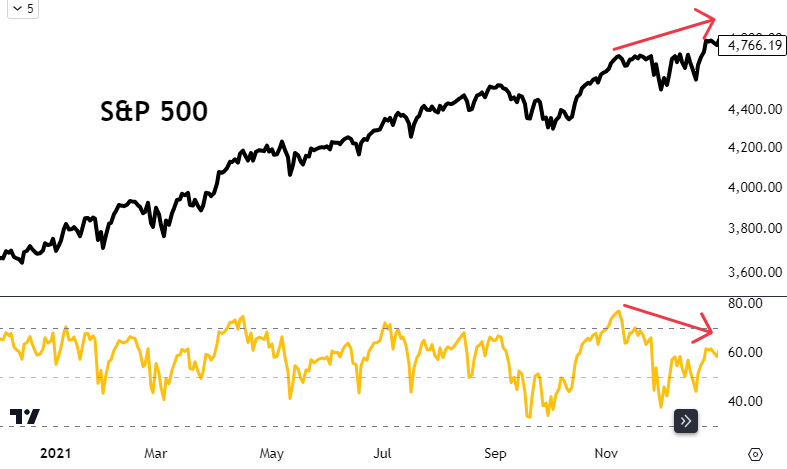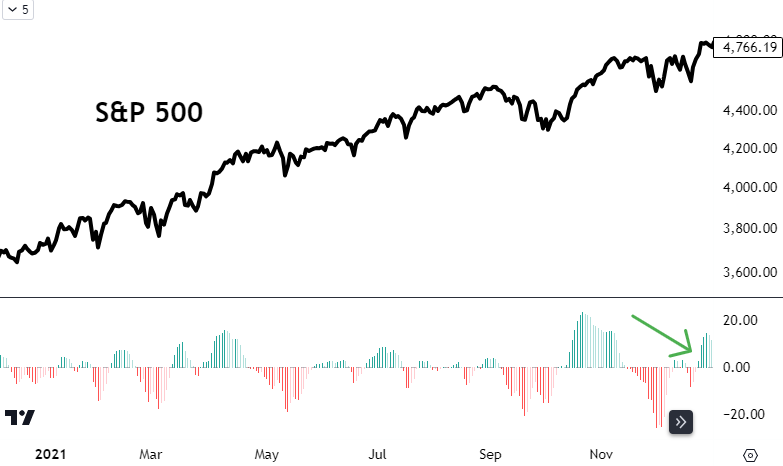
The first known reference to “Russian Roulette” was in a classic novel published in 1840. Merriam-Webster defines the game as, “An act of bravado consisting of spinning the cylinder of a revolver loaded with one cartridge, pointing the muzzle at one’s own head, and pulling the trigger”.
You can understand why Christopher made us go another direction with the imagery above.
It is an extremely risky game of chance. For a six-shooter pistol, the chance that the first trigger pull will fire a live round is 16.6%. After each consecutive trigger pull, the odds increase until five out of six shots are blank. The final, sixth shot always fires.
At this point, you may be thinking, “What could this possibly have to do with managing money?”
Many analysts and commentators decide whether to be bullish or bearish, and then will choose the indicator that best suits that view.
Much like the six-shooter firing blanks, indicators are plotted until one finally “hits”.
That is what I like to call, “Indicator Roulette.”
The Problem with Discretion
The long-debated argument between systematic and discretionary investing is one that revolves around defining the probability of a trade. Systematic/quantitative investors like to know exactly how a certain signal or system would have performed historically.
For discretionary traders, it is impossible to know how they would have performed in the past because they don’t have a complete set of rules. Many in this camp would argue that they are rules-based, but if that were true, they could program them and see the historical results… I digress.
The problem with discretionary trading is the tendency to form an opinion on what the market will do and then search for information that supports that view. That is the opposite of quantitative trading, where data and signals inform the view.
The technical term for this flaw is confirmation bias, which Briannica defines as “people’s tendency to process information by looking for, or interpreting, information that is consistent with their existing beliefs”.
Playing Indicator Roulette
Confirmation bias begins with an opinion about where a market is headed.
To start, we will be bearish since, at the time, inflation had risen from 1.3% in February of 2021 to 5.5% by year-end. (source: Trading Economics)
To illustrate the newly coined term, indicator roulette, we need to find an indicator that supports our bearish view. I will spare you six different charts, but you can imagine that I cycled through many indicators before finding the one that painted the best bearish picture.
The chart below shows the S&P 500 through the end of 2021 along with the relative strength index, or RSI for short. As the chart shows, there was a negative divergence in place which would have confirmed our bearish outlook for stocks.

What if instead, we looked at the S&P chart and were bullish? There had been many new highs, a dovish Federal Reserve, and a money supply that at the time had gone parabolic.
For indicator roulette, we’d again cycle through indicators until we found one that best supports that view.
As shown in the lower panel, the MACD histogram flipped from negative to positive in a matter of days, which confirms our bullish outlook.

Although unimportant for the point, who was correct, the bull or the bear?
The peak in stocks was the very next trading day as the 2022 bear market began. So, the bear won that time.
Danger of Confirmation Bias
An infinite number of examples could have been shown using almost any indicator. The goal wasn’t to find out which opinion was correct in hindsight; the point is that confirmation bias can be a fatal flaw in discretionary asset management.
As shown above, any indicator or datapoint can be discovered to justify a view so long as the correct explanation is assigned to it. If this view is wrong, a negative feedback loop begins where more confirming evidence is sought after.
This negative feedback loop plays into what is called the disposition effect, or the tendency to hold losing investments too long and sell winners too soon. (See the original paper on the subject here).
Eventually, a loss becomes an unbearable loss, and the stock or fund is sold. Likely just before a rally.
What’s the Alternative?
Rather than forming an opinion and finding evidence that supports it, the quantitative way assigns exact rules to decide when to buy and sell. With this method, there isn’t the luxury of painting a good or bad picture. The numbers do the talking.
Referring to the two indicators shown above, we would test an exact rule regarding an RSI divergence or MACD histogram to see what the results of the signal would have been historically.
While doing it this way, there is no hiding behind subjective, untestable analysis.
Potomac
As you probably know, at Potomac, we choose to quantify and test our ideas, which allows us to minimize confirmation bias. It doesn’t mean we will always be correct but it does make sure we don’t make shit up.
If we didn’t, Doomsday Dan would continually show us charts to explain how the world is going to fall apart.
Being able to define rules and stick to them is what creates a testable and repeatable process.
While a crude illustration, this concept of Indicator Roulette highlights a fundamental challenge with discretionary investing: confirmation bias.

Potomac Fund Management ("Company") is an SEC-registered investment adviser. SEC registration does not constitute an endorsement of the advisory firm by the SEC nor does it indicate that the advisory firm has attained a particular level of skill or ability. This information is prepared for general information only and should not be considered as individual investment advice nor as a solicitation to buy or offer to sell any securities. This material does not constitute any representation as to the suitability or appropriateness of any investment advisory program or security. Please visit our FULL DISCLOSURE page. The company does not make any representations or warranties as to the accuracy, timeliness, suitability, completeness, or relevance of any information prepared by any unaffiliated third party, whether linked to the Company website or incorporated herein, and takes no responsibility for any of this information. The views of the Company are subject to change and the Company is under no obligation to notify you of any changes. Different types of investments involve varying degrees of risk, and there can be no assurance that the future performance of any specific investment or investment strategy will be profitable or equal to any historical performance level.
PFM-622-20240807
